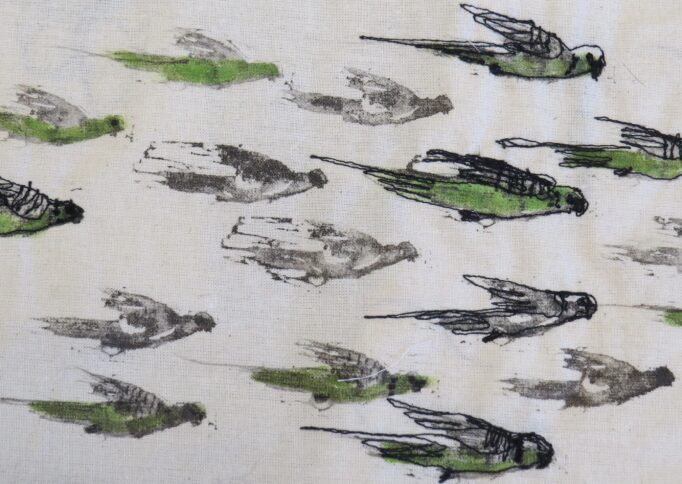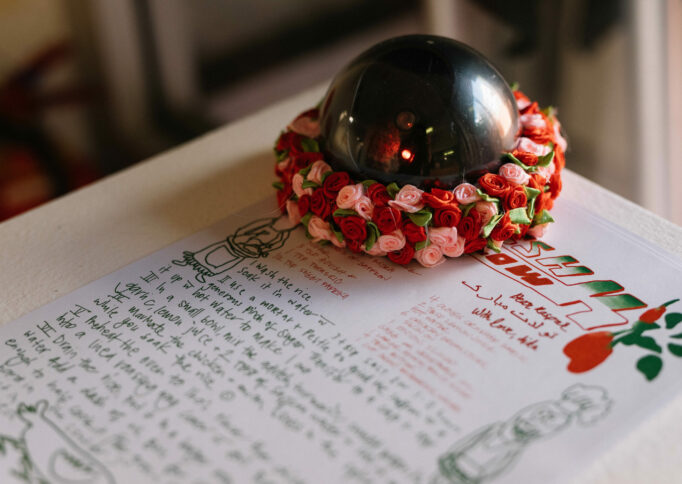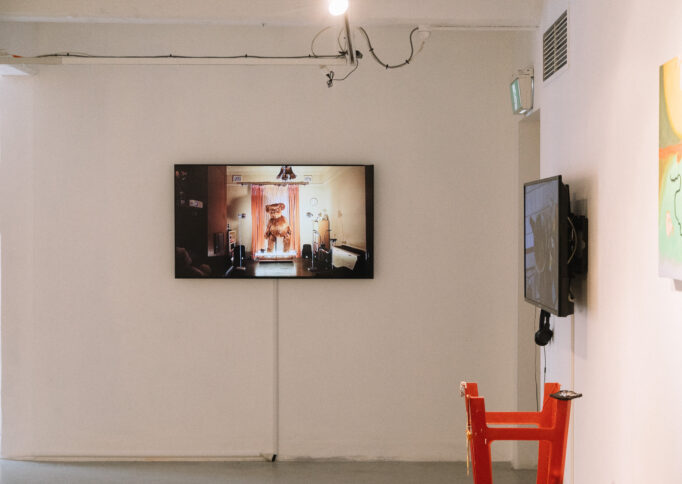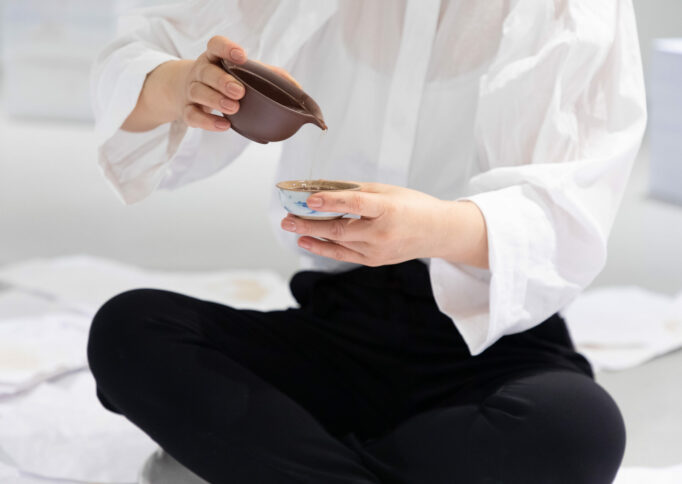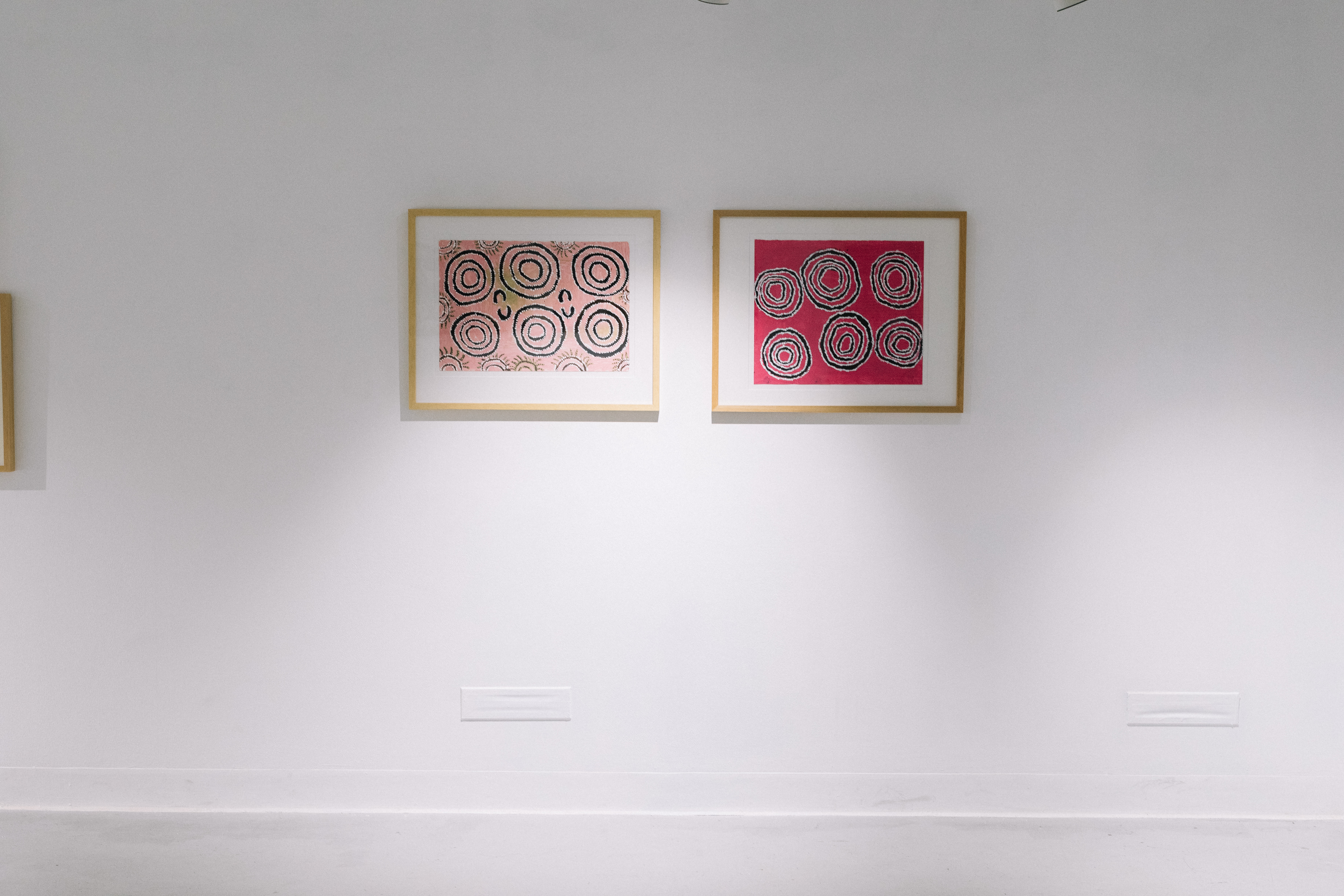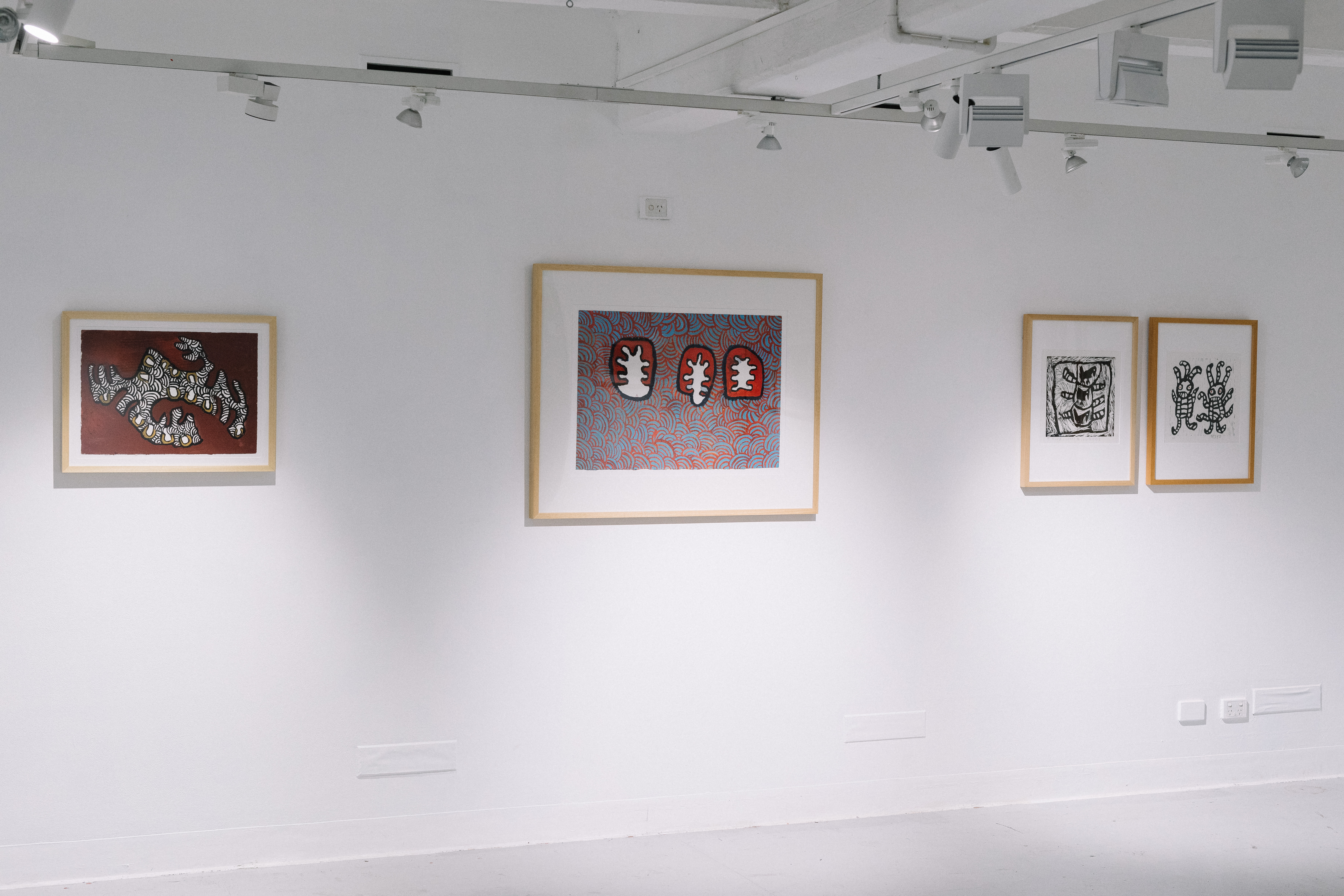Exhibition
Nura Rupert: Mamu and Mischief
Elizabeth Close
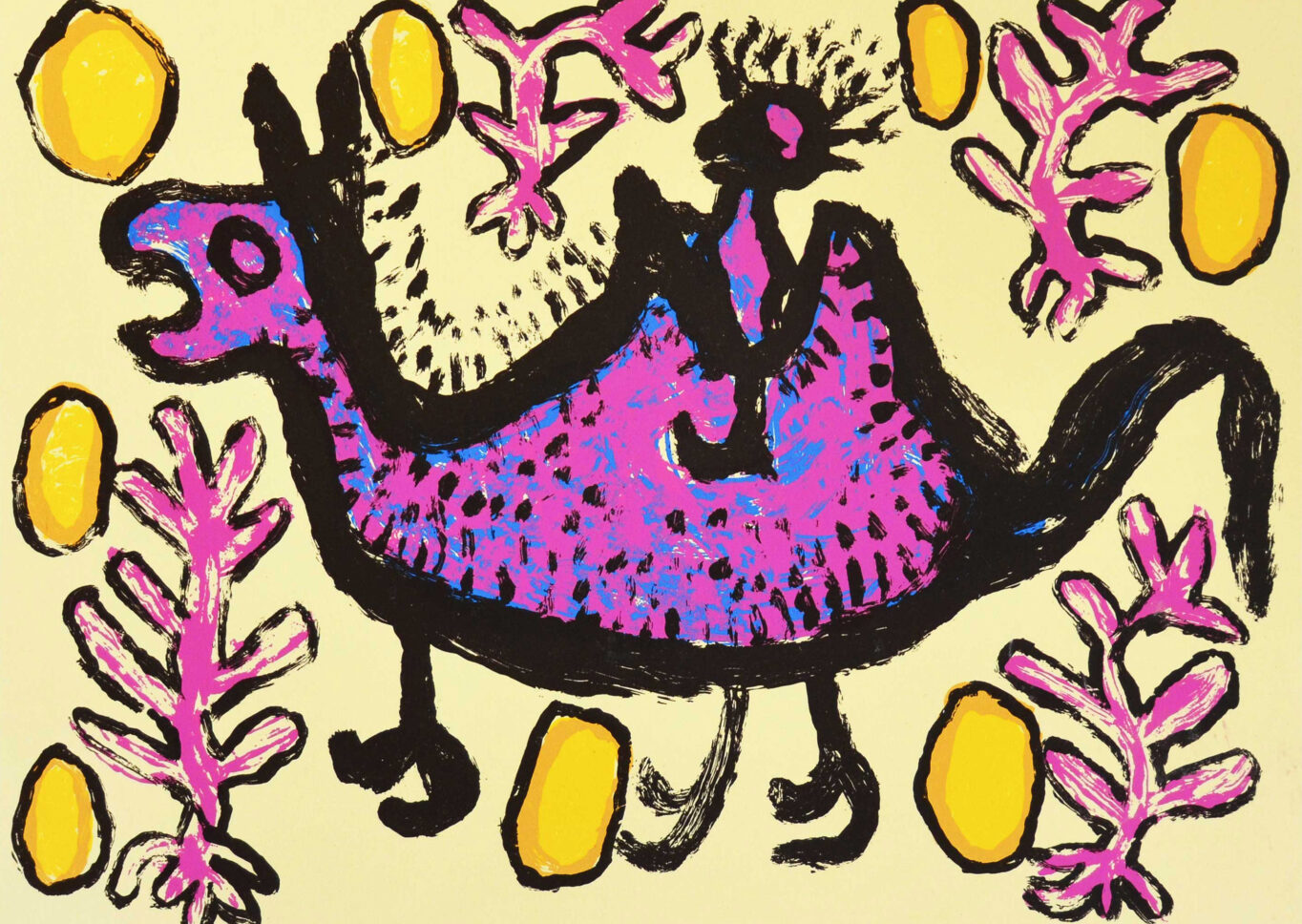
Nura Rupert, Camela, 2004, screenprint, 30.4 x 39.2 cm (image), edition 3/35, printed by Basil Hall, Pukatja/Ernabella Arts Community Collection, Flinders University Museum of Art TAN 1264.162, © the artist / Ernabella Arts Inc, image courtesy FUMA
About the exhibition
Curated by Elizabeth Close
Nura Rupert: Mamu and Mischief features paintings and prints by Nura Rupert. Kami Nura was a Ngangkari – a traditional Anangu healer. Nura could see Mamu (bad spirits) and the ways in which the Papa Tjuta (camp dogs) protected Anangu from Mamu. These works give us a precious glimpse through the eyes of a Ngangkari that could see more than most.
This exhibition draws on works housed by Flinders University Museum of Art including from the Ernabella Archive.
Supported by Arts South Australia, the In_Site: First Nations Emerging Curator Program is a partnership between Nexus Arts and Flinders University Museum of Art.
Unless marked, all works in this exhibition are drawn from the Pukatja/Ernabella Arts Community Collection, which is owned by Ernabella Arts Inc on behalf of Pukatja Community and held by Flinders University Museum of Art as custodian.
Nura Rupert: Mamu and Mischief
This is an audio description for the exhibition, Nura Rupert: Mamu and Mischief, curated by Elizabeth Close, and presented by Nexus Arts on Kaurna country, Adelaide, South Australia.
Elizabeth Close is a Pitjantjatjara and Yankunytjatjara woman from the APY Lands in Central Australia. Based in Adelaide, Elizabeth’s art practice evolved from canvas beginnings to also include large scale public art and digital design. Her work is a unique and distinct fusion of contemporary and traditional Aboriginal Art, using vivid warmth to convey the landscape of the APY while also drawing upon socio-political themes of identity, forced removal policies, loss of culture, and intergenerational trauma.
Close’s exhibition statement reads: As a Pitjantjatjara and Yunkunytjatjara woman, I have always wanted to work with the Ernabella Archive which is owned by Ernabella Arts on behalf of Pukatja Community and housed by Flinders University Museum of Art. My Grandmother was born and removed from Ernabella, or Puktaja, as it’s now known. I have other family: Tjamu’s and Kami’s (Grandfathers and Grandmothers), nieces and nephews, Aunties and Uncles, who still live there. Ernabella artists are well known for their ceramic and batik work. As a painter myself, I wanted to look at the collection through a painter’s lens. As I searched, one artist stood out – Nura Rupert. Nura’s playfulness and repeated motifs of Mamu (bad spirits) and Papa Tjuta (camp dogs) kept me returning to her paintings, questioning why this imagery featured so prominently in her work. Nura Rupert is family. She is one of my many Anangu Kami, and this year she would have been 90 years old. Her son Mulayingu Rupert has described his mum to my Tjamu and Kami as joyful, always happy, and full of laughter. Kami Nura was also a Ngankari – a traditional Anangu healer gifted with the power to see sickness, trauma, Mamu, and other causes of ill health or physical or psychological pain. She could see more than other Ngankari. Nura could see Mamu and the ways in which the Papa Tjuta protected Anangu from Mamu. They were not only a source of warmth and comfort, but also a source of protection. Nura’s vibrant works reflect her cheeky and mischievous attitude – dancing with movement, light and energy; I can see, hear and feel her laughter and mischief.
This exhibition is in the Nexus Arts Gallery, a white rectangular room, four metres wide and six metres long, with a single white rectangular column at its centre. Works by Nura Rupert are installed at eye level around the walls of the room, set against white mount board in simple light timber frames. In this audio description, works are described in an order that follows the works around the room in clockwise direction, from left to right, and together with works alongside which they have been mounted.
The first two works to the left side of the room after entering the gallery are each Untitled, from 2007. Both are screen prints – colour ink on paper, and both measure 25 centimetres tall and 33.5 centimetres wide. The leftmost work shows two four-limbed dog-like figures facing to the right, set against a teal background. Shown side-on, the faces of each figure show one circular orange eye each. The figures are dark brown, and have been highlighted with this same orange around their edges, giving them the appearance of glowing. The shapes and proportions of each figure differ, with the thick curved lines of each creature emphasising different parts of the anatomy of each. The feet of both figures have large, clearly delineated toes, the leftmost figure with four on each foot, and the rightmost figure with three.
Placed immediately to the right of this work, the second untitled work shows three standing dark purple figures against a deep red background. Each of the figures has four short curves limbs, resembling arms and legs, and large, curved protrusions emerging from their heads, resembling rabbit’s ears. Their faces are featureless, except for two large, round lighter purple eyes. This lighter purple also traces the edges of each figure, giving them the same glowing look as in the previous work. Above the three figures, a light blue wavy line drawing hovers above them, interrupting the red background. The lines swirl and knot, forming two figures of their own, loosely resembling the stem and petals of a flower.
To the right of these works, large black text printed directly onto the white gallery wall reads ‘mamu pitjantja, mamu is coming’. The text is split across two lines, and extends over the 90-degree corner of the room, bridging the gap between the previous works and the next, which is Untitled, 2004, synthetic polymer paint on paper, 37.5 centimetres tall by 52.5 centimetres wide.
This work depicts a single white abstract shape detailed with black line work and gold highlights, over a deep burnt orange background. The shape is a network of convex and concave curved lines, forming four unique branching hand-like structures which arc away from the shape’s centre, and extend towards the edge of the frame. Throughout the network, overlapping stacks of curved black lines fill the white space, interrupted in some sections by empty white circles, framed by thicker horseshoe shapes in gold.
The next work is Untitled, 2005, synthetic polymer paint on paper, 53 centimetres tall by 75 centimetres wide. This work depicts three figures set on a red and blue textured background, filled with overlapping circles of radiating soft blue and deep red lines. Each of the three figures are solid white, set over surrounding oval-shaped fields of deep red. The white figures each have a central mass, with short, rounded extensions protruding out from them from all sides. The leftmost shape has six protrusions, the central shape seven, and the rightmost shape eight. The left and central shape are both fixed to the bottom of their red framing fields, lending to them the appearance of leafless trees. The right figure is unattached to the frame around it, and floats freely, resembling the silhouette of an insect.
To the right along the wall, two works have been placed in a pair alongside one another – Tjulpu, 2003, Linocut; ink on paper, 30 x 30 cm, and Mamu/spooky spirits, 2003, linocut, ink on paper, hand-coloured addition of red paint, 30 x 30 cm. The left image depicts a single six-legged figure, set within a thick black frame irregularly traced around it. The figure’s body is shown from above, and the figure spans almost the full height and width of the frame. Its body is in three segments, each with one striped leg on each side, and each segment contains a single, simple black figure of a bird, all of which are shown pointing to the right, with a single white eye on their heads. The linocut is printed in black only, and the negative space within the work was created imprecisely, leaving behind dense patterns of fine black lines which texture the white space around its subject.
The right work depicts two humanoid figures against a white background – the left figure with two arms, two legs and three further limbs protruding from its head. The right figure is similar, but with two additional limbs protruding from its hips. The limbs of both figures are striped, containing between three and six white segments separated by black lines, their torsos are each a grid of irregular white shapes between black lines, and their faces show what resembles a mouth of four large white teeth, and two circular eyes, empty except for small red pupils, the only colour visible on either of the two works.
To the right of the last two images, around a 90-degree corner, five works have been mounted alongside one another as a cluster, each depicting groups of animals in various numbers and styles. The cluster is split across two rows, with three works on the top row, and two on the bottom. The leftmost work is Tjulpu Parpakani (Flying Birds), 2005, etching, aquatint; colour ink on paper, 32 centimetres tall and 24.5 centimetres wide. The work depicts four birds, shown from above over a pale cream background, flying towards the right with both eyes visible on the top of their large, round-beaked heads. They have short wings extending out from each side of their large rounded-rectangular bodies, which are filled with alternating patches of black and white, suggesting irregular zebra stripes. To the right, the central work is Walking Birds, 2007, etching, aquatint; colour ink on paper, 32 centimetres tall and 24.5 centimetres wide. The work depicts four birds arranged in two rows of two, shown standing with their large feet visible, each of which has three toes. Each of the birds differ slightly in shape, though all have two visible eyes, a short, rounded beak, and a black & white patchy colouration across their entire bodies and feet. The work is rendered in black ink, but has been produced with a warm orange wash over the whole image, giving it a brown appearance. The rightmost work on the top row is Three birds, 2006, Etching, aquatint; green ink on paper, 9.3 centimetres tall and 24.3 centimetres wide. This work depicts three right-facing birds rendered in a teal green ink over a light green washed background. The three birds are painted as simple figures with two three-toed feet, each with a single large eye visible on the side of their large heads, which are mirrored by equally large upward-pointing tails, giving the birds a U-shaped profile.
In the second row, the left work is Two birds, 2006, Etching, aquatint; blue ink on paper, 9.3 x 24.3 cm. The two birds in this image are painted a dark blue over a patchy lighter blue wash, and face inward toward each other. The birds resemble those in the previous work, with a single large eye on their large heads, with large tails. The final right work in the second row is Rabbita kutjara – two rabbits, 2006, etching, aquatint; purple ink on paper, 24.5 centimetres tall and 34.5 centimetres wide. This work depicts two rabbits facing inward towards each other, painted in deep purple ink, over a very pale purple wash. The rabbits are the largest animals in any of works in this cluster, and are rendered simply as silhouettes, except for one large eye on each of their heads, which dominate their faces. Each of the rabbits’ four short limbs are visible, each with four toes, and their legs protrude from of their bodies in a straight line towards the legs of the other.
The final pair of works in this exhibition are both Untitled, from 2005, synthetic polymer paint on paper. The left work measures 38 centimetres tall by 56 centimetres wide, and depicts six sets of three concentric circles, arranged in two rows of three, surrounded by other smaller shapes. The circles and other shapes are painted with black paint, and are rendered over a pale pink background. Between the six sets of circles, two pairs of U-shaped lines face each other, one pair on either side of the central circles. Around the edge of the frame, partially obscured smaller sets of concentric circles are surrounded with short brown radiating lines.
The right work measures 42 centimetres tall by 49.5 centimetres wide, and depicts six similar groups of three concentric circles, also arranged in two rows of three. The circles are black, and have been highlighted in white, giving the circles the appearance of glowing. They are set on a deeper pink background, and unlike the circles in its partner work, are not surrounded by other shapes.
This has been an audio description by Biripi man Elias Wilson for the Nexus Arts Gallery show, Nura Rupert: Mamu and Mischief, curated by Elizabeth Close. More information on this and other events and exhibitions can be found on the Nexus Arts Website, nexusarts.org.au.
Explore the exhibition
-
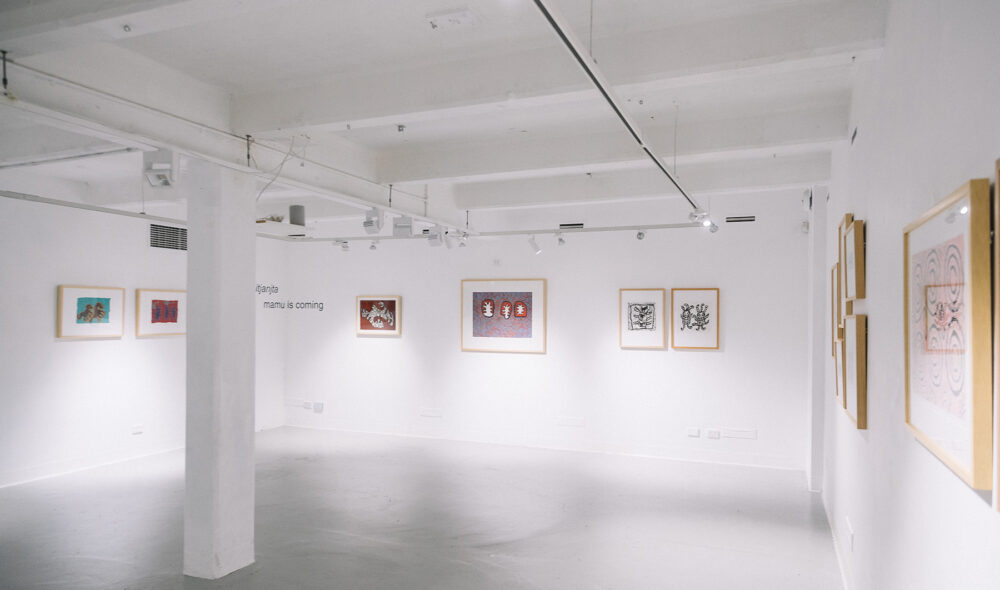
- Artwork Installation view of Nura Rupert: Mamu and Mischief
-
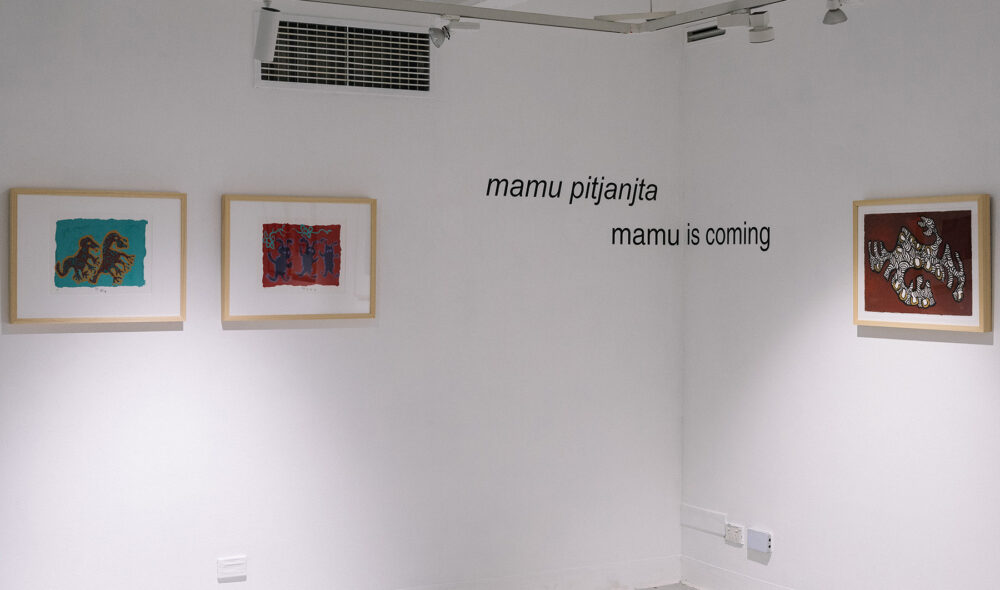
- Artwork Nura Rupert
Artwork details from left to right: Untitled 2007
screenprint; colour ink on paper
25.0 x 33.5 cm (image); 38.0 x 47.0 cm (sheet)
artist’s proof, printed by Basil Hall and Jo Diggens, Basil Hall Editions
TAN 1264.160
Untitled 2007
screenprint; colour ink on paper
25.0 x 33.5 cm (image); 38.0 x 47.0 cm (sheet)
artist’s proof, printed by Basil Hall and Jo Diggens, Basil Hall Editions
TAN 1264.161
Untitled 2004
synthetic polymer paint on paper
37.5 x 52.5 cm (image, sheet)
TAN 1264.145
-
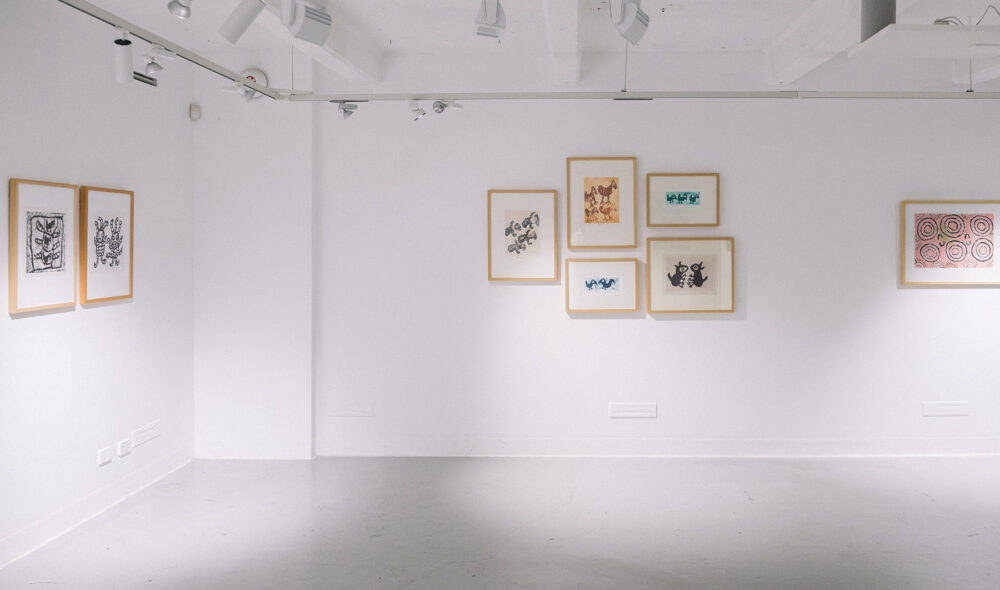
- Artwork Installation view of Nura Rupert: Mamu and Mischief
-
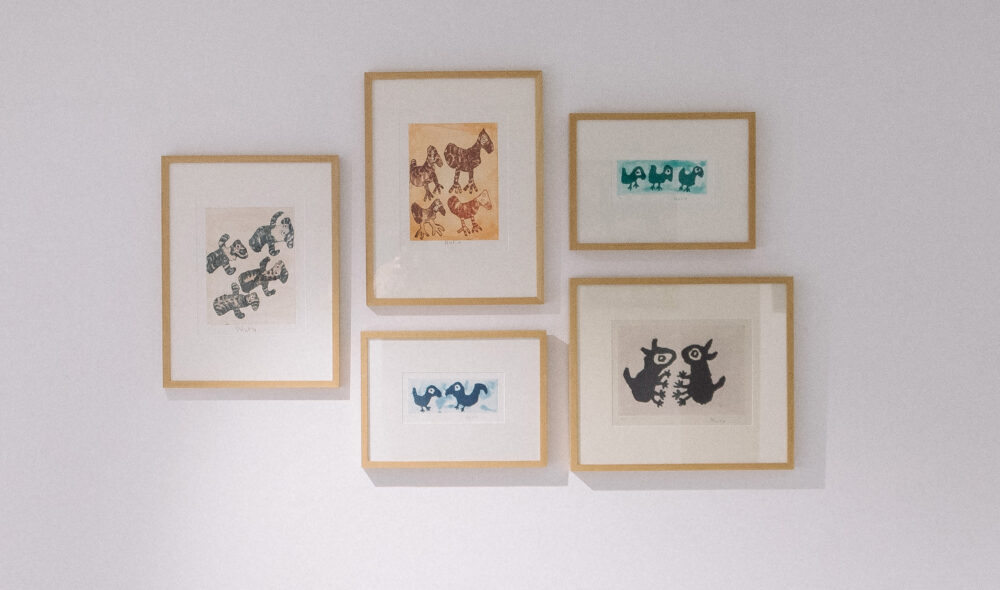
- Artwork Nura Rupert
Artwork details clockwise from left:
Tjulpu Parpakani (Flying Birds) 2005
etching, aquatint; colour ink on paper
32.0 x 24.5 cm (plate); 53.7 x 39.2 cm (sheet)
artist’s proof, edition of 20, printed by Basil Hall and Jo Diggens, Basil Hall Editions
TAN 1264.158
Walking Birds 2007
etching, aquatint; colour ink on paper
32.0 x 24.5 cm (plate); 53.7 x 39.0 cm (sheet)
artist’s proof, edition of 20, printed by Basil Hall and Jo Diggens, Basil Hall Editions
TAN 1264.159
Three birds 2006
Etching, aquatint; green ink on paper
9.3 x 24.3 cm (plate)
TAN 1264.284
Two birds 2006
Etching, aquatint; blue ink on paper
9.3 x 24.3 cm (plate)
Edition 1/30, printed by Basil Hall, Basil Hall Editions
TAN 1264.284
Rabbita kutjara – two rabbits 2006
etching, aquatint; purple ink on paper
24.5 x 34.5 cm (plate)
Edition 1/30, printed by Basil Hall, Basil Hall Editions
TAN 1264.286
-
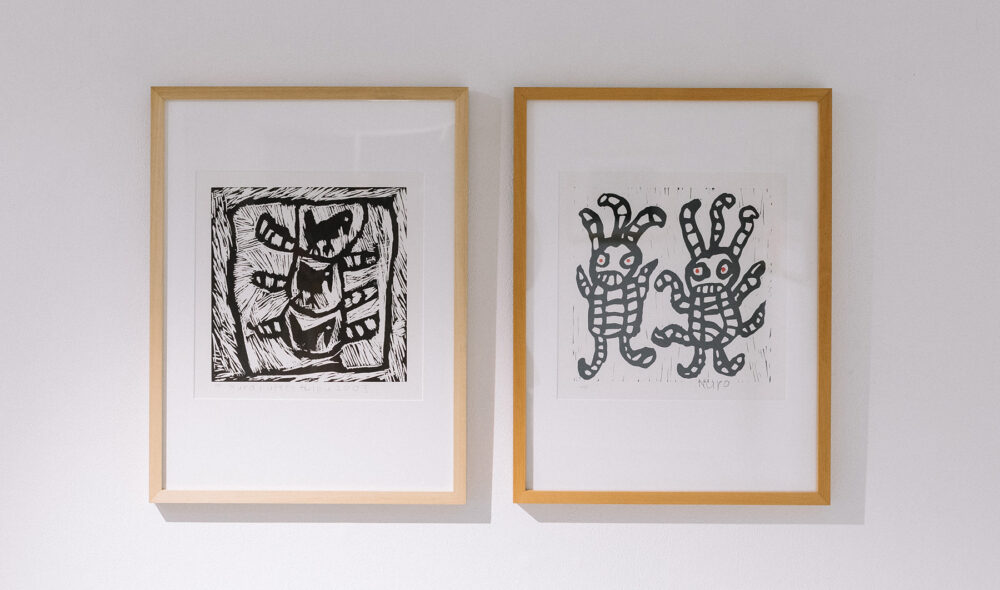
- Artwork Nura Rupert
Artwork details from left to right:
Tjulpu 2003
Linocut; ink on paper
30.0 x 30.0 cm (image); 55.5 x 38.0 cm (sheet)
Artist Proof, printed by Basil Hall, Basil Hall Editions
TAN 1264.163
Mamu/spooky spirits 2003
linocut, ink on paper, hand-coloured addition of red paint
30.0 x 30.2 cm (image), 38.0 x 56.0 cm (sheet)
Artist Proof, printed by Basil Hall, Basil Hall Editions
TAN 1264.164
-
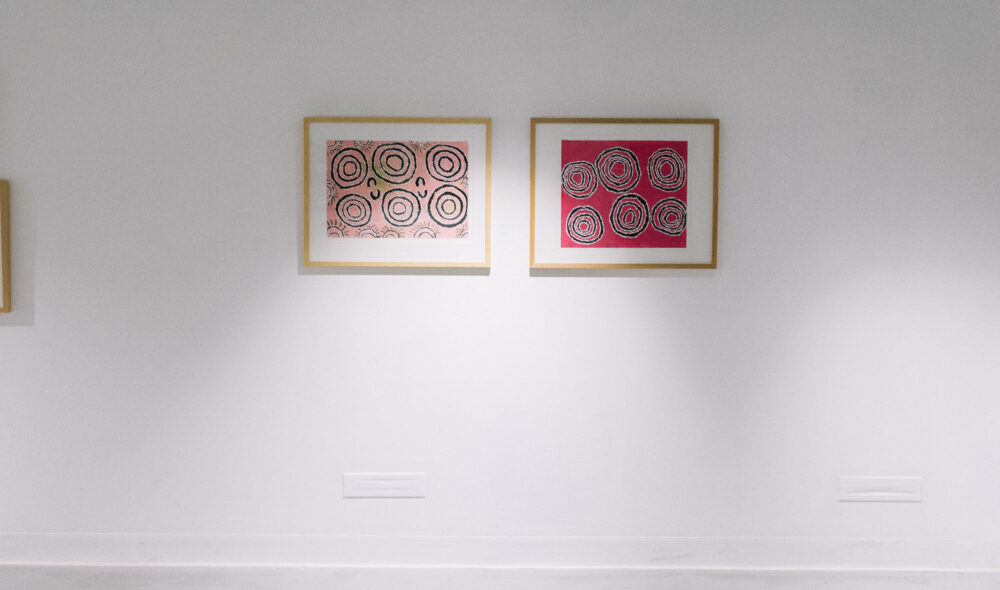
- Artwork Nura Rupert
Artwork details from left to right:
Untitled 2005
synthetic polymer paint on paper
38.0 x 56.0 cm (image, sheet)
TAN 1264.143
Untitled 2005
synthetic polymer paint on paper
42.0 x 49.5 cm (image, sheet)
TAN 1264.146
-
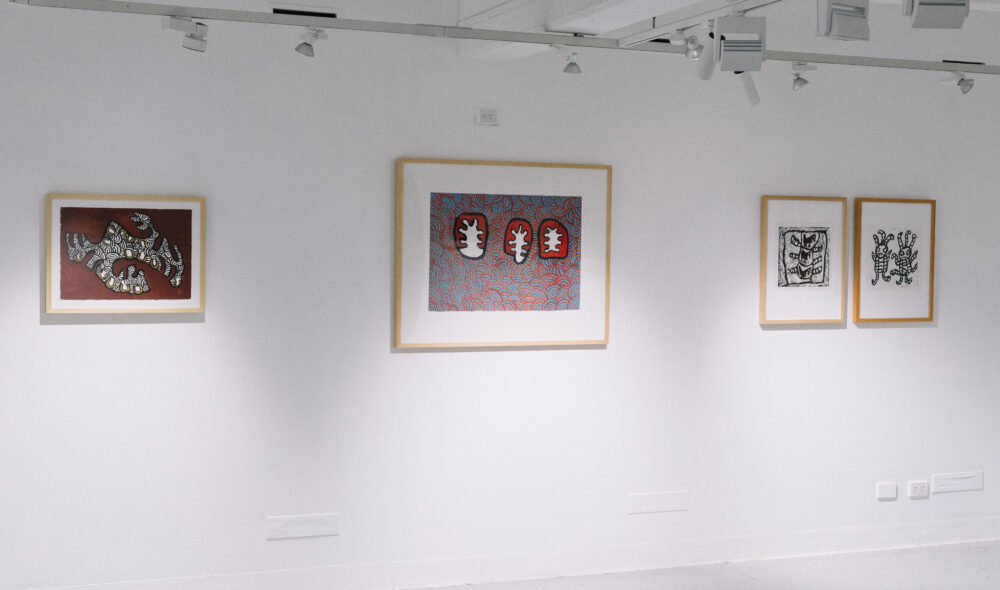
- Artwork Nura Rupert
Artwork details from left to right: Untitled 2004
synthetic polymer paint on paper
37.5 x 52.5 cm (image, sheet)
TAN 1264.145
Untitled 2005
synthetic polymer paint on paper
53.0 x 75.0 cm (image, sheet)
TAN 1264.151
Tjulpu 2003
Linocut; ink on paper
30.0 x 30.0 cm (image); 55.5 x 38.0 cm (sheet)
Artist Proof, printed by Basil Hall, Basil Hall Editions
TAN 1264.163
Mamu/spooky spirits 2003
linocut, ink on paper, hand-coloured addition of red paint
30.0 x 30.2 cm (image), 38.0 x 56.0 cm (sheet)
Artist Proof, printed by Basil Hall, Basil Hall Editions
TAN 1264.164
Catalogue essay
Nura Rupert: Mamu and Mischief
Curated by Elizabeth CloseAs a Pitjantjatjara and Yunkunytjatjara woman, I have always wanted to work with theErnabella Archive whichisowned byErnabella Arts on behalf ofPukatjaCommunity andhousedby FlindersUniversity Museum of Art. My Grandmother was born and removedfromErnabella, orPuktaja, as it’s now known.I have other family:Tjamu’sandKami’s(Grandfathers and Grandmothers), nieces and nephews, Aunties and Uncles, who still livethere.Ernabellaartistsare well known for their ceramic and batik work. As a painter myself, Iwanted to look at the collection through a painter’s lens. As I searched, one artist stood out–Nura Rupert. Nura’s playfulness and repeated motifs ofMamu(bad spirits) andPapa Tjuta(camp dogs) kept me returning to her paintings, questioning why this imagery featured soprominently in her work.Nura Rupert is family. She is one of my many AnanguKami, and this year she would havebeen 90 years old. Her son Mulayingu Ruperthas described his mum to myTjamuandKamias joyful, alwayshappy,and full of laughter.KamiNura was also aNgankari–a traditionalAnangu healer gifted with the power to see sickness, trauma,Mamu, and other causes of illhealth or physical or psychological pain. She could see more than otherNgankari. Nuracould seeMamuand the ways in which thePapa Tjutaprotected Anangu fromMamu. Theywere not only a source of warmth and comfort, but also a source of protection.Nura’s vibrant works reflect her cheeky andmischievousattitude–dancing with movement,light and energy; I can see, hear and feel her laughter and mischief.
Meet the artists & curators
Elizabeth Close is a Pitjantjatjara and Yankunytjatjara woman from the APY Lands in Central Australia. Based in Adelaide, Elizabeth’s art practice evolved from canvas beginnings to also include large scale public art and digital design. Her work is a unique and distinct fusion of contemporary and traditional Aboriginal Art, using vivid warmth to convey the landscape of the APY while also drawing upon socio-political themes of identity, forced removal policies, loss of culture, and intergenerational trauma.

